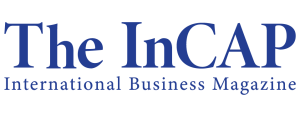The present situation affirms the problems that lay beside us. The problem with bubbles and their temporary effectiveness gives us a false glimpse into the world of trade. The business has always been associated with a particular form of disturbance, allowing us to have a bigger problem to deal with. The generalizations and the business model are the perfect fit for each other. The article is about Efficacy of The General Business Model.
The element of stereotypes gives rise to the basic needs of a business model to be successful. Yet, in the world of trade and business, we encounter countless situations that prove otherwise, and the reasons remain dim. The so-called bubbles or indefinite, wistfully temporary economic progress in a bleak future outlook means a parallel approach is required to reach equilibrium. But to completely adhere to the rules and maintain the laws and nature of the business model prolifically puts us under the litmus test. So far as we have grown to prepare and predict the crisis, there isn’t a single aspect that goes beyond explaining the profundity of what we do.
The preliminary report indicates that the very notions dictating the constituents of the business model have now cemented their place in the world of ethical conduct of business. As we begin to reciprocate with the hindrances and obstacles present in nature, so the business model and its artificial articulation become ever so profound. Also, the most specific requirements become the most significant question marks before delving into the gritty details of how the business models function. The consideration becomes as evident as the problems, and the economical solution to comply with unfair means transforms itself into the biggest game-changer in history.
However, the only way to meticulously and adequately present the key to the problems existing in the future for the growth of untoward circumstances puts a heavy toll on the mind. The latency embedded within businesses and the faults within the industry meets the popular agreement to violate the laws into a web of corruption. Dealing with the economics of making a business function for profit has now become the flag bearer of business practice.
Many years back, when the tools for analysis were limited, an age existed where the truth about the method of conduct, in general, had some value over everything else. Moralizing honesty was the trade talk back then, and since that, it has been on a downward spiral. There is a limit on the extent to which we can violate the code of conduct, but the truth about the manifesto remains that the code has deteriorated. Events dictate how we reminisce about the past, but in reality, we have grown to acknowledge our mistakes as we have seen them be more extensive than our entire whole. With that, we slowly remember and learn some of the most powerful lessons life offers: intermixing the realities and how it has soothed us to a position of peace.
With our factual manifesto, the mandate towards the efficacy of a business model remains bleak. In an ever so popular way, the regions and legions of businesses that adopt the procedural practices that themselves have become the stagnant notion. But how far is it? This question in itself gives us the methods to build a business-ranging from SMEs to Industries-running a business with its attributes hasn’t become as easy as it seems to be.
And the business model is a complete theorization of what we know as behavioral economics and how behavior amongst businesses and their components builds up a compact system. The order of predetermination of the marketplace where interaction among economic bodies mingles popularly with the reverence felt in the aftermath. So far, we have pretty literally dealt with the opportunities in a bubble and options in general. To proceed from that, it will take a massive undertaking. However, the narrative that joins the ideas of business methodologies and practice has prudently put the concept at the apex of economic productivity.
As we rest with eventuality, there wasn’t a fault in the line to digest the ramification involving negative connotations of the general business model. The term business model accurately specifies how the business plans to profit while handling its assets and expenses. Controlling the support becomes the risk, and the monetary fluidity required involves the involvement of the whole workforce as each person contributes to the make-up of the entire business.
On the other side, the expenses rest entirely on how macroeconomics takes precedence. Nationwide supply-demand, aggregate production, and employment level decide the expense of things, but there is a difference. The expense at which we have the assets is entirely different from the expense we have from just buying something, and as with material things, there will be deterioration and eventual depreciation. The real gist is that by adequately pondering upon the true nature of realism in anticipation of the perfect business model, we reach a place newer and even better in anticipation of the deployment of resources.
In a very unusual context, the developing nations of the world have seen development seemingly out of the picture as the very minority and superpower governs the majority of the world, including the emerging markets, and the business model is therefore different for countries depending on the economy and trends in the business pattern. Without the proper practice of ethics, the business model will not be of any particular use, and this reality and shift in paradigm development have lifted the Business model and its efficacy from the pits of destruction and without which the autocracy of business loses meaning.
Engr. Samin Shadman Zahir
Contributor,
The InCAP
To explore more perspective views, Please Click Here!
















